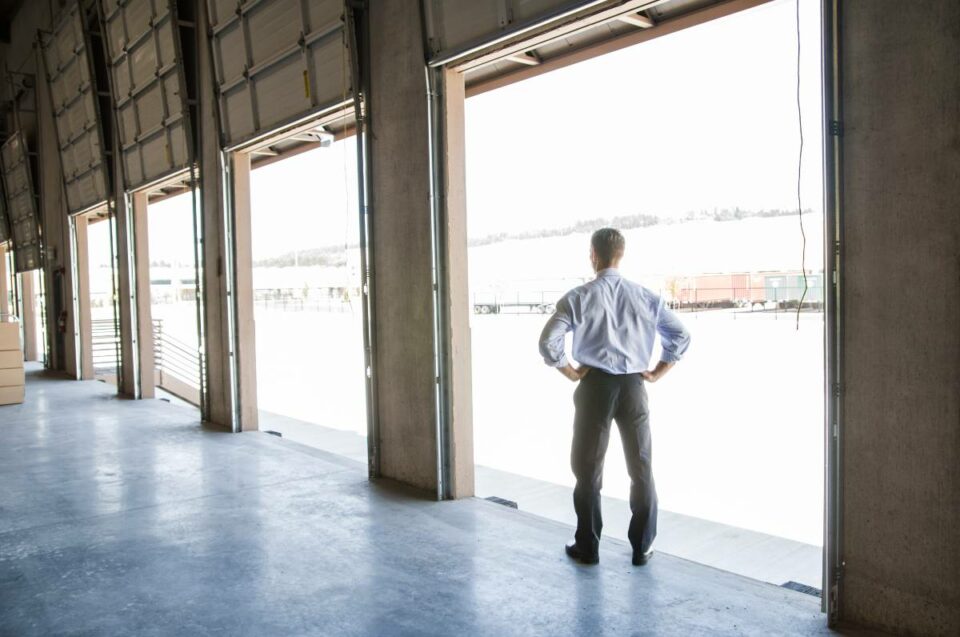Commercial real estate tenants in the United States often find themselves confused about the difference between rentable and usable square footage. While the two are related, they are not always equal.
In this post, we will explore the difference and help you understand how it impacts your business. By understanding this concept, you can make more informed decisions about your office space needs. Read on to learn more!
Usable vs Rentable Square Feet Demystified
![Rentable Square Footage vs Usable Square Footage [Your Complete Guide] Rentable Square Footage vs Usable Square Footage](https://toljcommercial.com/wp-content/uploads/Rentable-Square-Footage-vs-Usable-Square-Footage-2.jpg)
The first step in understanding how to calculate rentable square footage is to understand the difference between usable square footage and rentable square footage.
Usable Square Feet (USF)
Generally, a building’s total usable floor area is defined as USF. It includes interior walls, shared hallways, and common areas and is measured from the outside of exterior walls and windows.
In that calculations are made by measuring outside exterior walls, USF measurements are comparable to residential measurements. Because the method of measurement does not account for the thickness of the walls, it is expected that tenant measurements will differ slightly from USF.
The USF of commercial property is the space that a tenant will occupy and use for their business. This square footage should be considered when determining how much space your business needs.
Rentable Square Feet
Rentable square feet are calculated by adding usable square feet to shared space. Shared space, or common spaces are functional by all tenants in the building and include, but are not limited to: hallways, reception areas, public restrooms, and fitness facilities.
![Rentable Square Footage vs Usable Square Footage [Your Complete Guide] Rentable Square Footage vs Usable Square Footage](https://toljcommercial.com/wp-content/uploads/Rentable-Square-Footage-vs-Usable-Square-Footage-1.jpg)
Why This Matters
The most important distinction to understand between usable and rentable square feet is that the rentable, not the usable, will be used to calculate your annual rental expense. Because the total rentable square footage for a given area is usually greater than the usable, you must use the correct measurement when calculating your budget.
Load Factor
The load factor is a useful tool for tenants and landlords to understand the difference between rentable and usable square feet in a facility. This figure is based on the percentage of the building’s common area. Divide the total profitable square feet by the total usable square feet to calculate the load factor.
Total Rentable SF / Total Usable SF x 100%
The tenant’s usable square footage is multiplied by this load factor to determine the profitable square footage.
Tenant’s Usable SF x Load Factor is the amount of usable space supplied by a property.
For example, if a building has a load factor of 20%, this would mean that one-fifth is common space within the building.
So, if you were leasing 500 usable office spaces in this building, your rentable square feet would be 600 (500 x 120% = 600).
Now that we have reviewed how to calculate rentable square footage let’s take a look at an example.
For example, you are looking at two office buildings for lease, Suite 100 and Suite 200. Both suites are the same size, with identical floor plans.
The only difference is that Suite 100 has one large common area while Suite 200 has several small common areas. You can see how this would affect the load factor and, as a result, the rentable square foot.
Load Factor for Suite 100 = Total Rentable SF / Total Usable SF
SF= 12,000 / 11,000= 109.09%
Rentable SF for Suite 100 = Tenant’s Usable SF x Load Factor= 11,000 x 109.09%= 12,000
Load Factor for Suite 200 = Total Rentable SF / Total Usable SF= 12,500 / 11,500= 108.70%
Rentable SF for Suite 200 = Tenant’s Usable SF x Load Factor= 11,500 x 108.70%= 12,500
As you can see from this illustration, even though both suites are likely the same size, the space with one large common area has a lower load factor and a higher rentable square footage.
When evaluating different properties, the load factor can help tenants compare how much space they will actually have to use. While the load factor is a helpful tool, it’s important to remember that there are a variety of factors to take into account before choosing an office space.
Loss Factor LF
The loss factor is a calculation that landlords use to determine how much common space is needed in their buildings. This figure is based on the percentage of the building’s common area. To calculate the loss factor, divide the total square footage of all the common areas by the total usable square feet of the property.
Gross Square Feet
The gross square footage, or GSF, is the total area of a structure, including all rentable and non-rentable areas.
My Opinion on Rentable Square Feet
Renting a space is a great way to get started in business, but it can also be a great way to save money. If you’re looking to save money, here are some tips on how to rent the right amount of square feet for your business:
Know Your Needs
The first step in renting the right amount of space is knowing what your needs are. Ideally, you should be able to fit all of your equipment into one room and not have to worry about moving anything around. However, if this doesn’t work out for you, don’t stress too much about it — your business might benefit from other options as well.
Consider Other Options
Even if you want all of your equipment in one place, there may still be ways for you to save money by renting less than what you need now.
For example, if you’re just starting out and don’t know if you’ll need more space later on down the road, then renting less square footage might be better for now until you see how things go with your business.
Take a look at the load factor and gross square footage when evaluating different properties to find one that best suits your needs. Based on this information, you can determine how much space your business needs to rent.
What Landlords Should Keep in Mind
Calculating the square footage of a rental unit is an important task for both landlords and tenants. The information is often needed when filling out applications, leases, and other documents.
As a landlord, you should always keep the rentable square footage in mind when setting rental prices. You don’t want to charge too much or too little for rent. If you charge too much, you may have trouble finding tenants. If you charge too little, you may end up losing money on your investment.
Consider Your Budget
When you’re looking for a new place to live, you should always consider your budget. Make sure that you can afford the rentable square footage of the places you’re considering.
You don’t want to end up in a situation where you can’t make your monthly payments because your rent is too high. Keep this in mind when calculating the rentable square footage of the places you’re considering.
Use the tips in this article to help you calculate the rentable square footage of the places you’re considering. The information you obtain will allow you to make an informed decision about how much space your company needs to rent.
Conclusion
Rentable square footage is an important factor to consider when it comes to real estate. You should always keep this in mind when looking for a new place to live or when setting rental prices. Consider your budget and make sure that you can afford the rentable square footage of the places you’re considering.
The goal of this article is to provide you with an understanding of the difference between profitable and usable square footage. Feel free to contact me or schedule a free consultation if you have any questions or would like to discuss Rentable Square Footage vs Usable Square Footage further.



